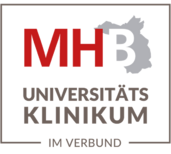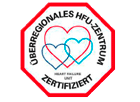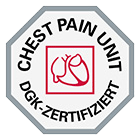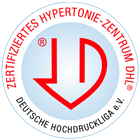Hypertrophic obstructive cardiomyopathy
Hypertrophic obstructive cardiomyopathy is a disease in which the heart muscle becomes thickened. The disease is often associated with cardiac arrhythmias and a significant reduction in exercise capacity.
What is hypertrophic obstructive cardiomyopathy?
Hypertrophic cardiomyopathy is characterized by ventricular hypertrophy (thickening of the ventricles) and often affects several members of the same family. A diagnosis of hypertrophic cardiomyopathy is confirmed when other possible causes of hypertrophy affecting the heart muscle, such as aortic stenosis or high blood pressure, are excluded.
The ventricular wall (the wall between the two main chambers of the heart) may be so severely thickened that this impedes - or even blocks - the flow of blood out of the ventricles. This thickening also restricts the amount of blood the chambers of the heart can hold. As a result, the heart has to work extremely hard in order to pump a sufficient amount of blood around the body. Among other things, this will lead to palpitations, cardiac arrhythmia, dizziness, chest pain and shortness of breath.
What are the main symptoms?
The most important symptoms of this condition are, on the one hand, the heart's limited capacity to pump blood around the body, and on the other, cardiac arrhythmia.
- Dyspnea (shortness of breath), mainly under exertion
- Typical or atypical angina pectorisSchwindel
- Dizziness
- Syncope (fainting)
- Considerable variation in symptom presentation
- Cardiac arrhythmias (including atrial fibrillation, but also malignant ventricular tachycardias that are associated with sudden cardiac death) and palpitations
What are possible causes?
In most patients, this disease is either inherited or develops as a result of other undiagnosed cardiovascular diseases affecting the heart muscle surrounding the ventricles.
Diagnosis of hypertrophic obstructive cardiomyopathy
- Physical examination including auscultation (listening to heart sounds), palpation and visual inspection
- ECG, if necessary ambulatory ECG
- Chest x-ray
- Transthoracic echocardiogram
- Magnetic resonance imaging (MRI)
Treatment options for hypertrophic obstructive cardiomyopathy
- Avoidance of strenuous physical exercise
- Drug-based therapy using beta blockers and calcium antagonists (calcium channel blockers)
- In patients with clinical symptoms, treatment options are aimed at increasing exercise capacity: catheter-based alcohol septal ablation (ASA) of septal hypertrophy involves the injection of alcohol in order to destroy the thickened part of the heart muscle. This leads to a reduction in thickness.
- Surgical options: Septal myectomy, which involves the surgical removal of excess heart muscle tissue through an incision in the aortic root.
- In rare cases, for instance in bradycardia (arrhythmia with a slow heartbeat), pacemakers may be used to improve the flow of blood through the blood vessels
- ICD-implantation may be used in patients with recurrent and undiagnosed syncope or known malignant arrhythmias.





